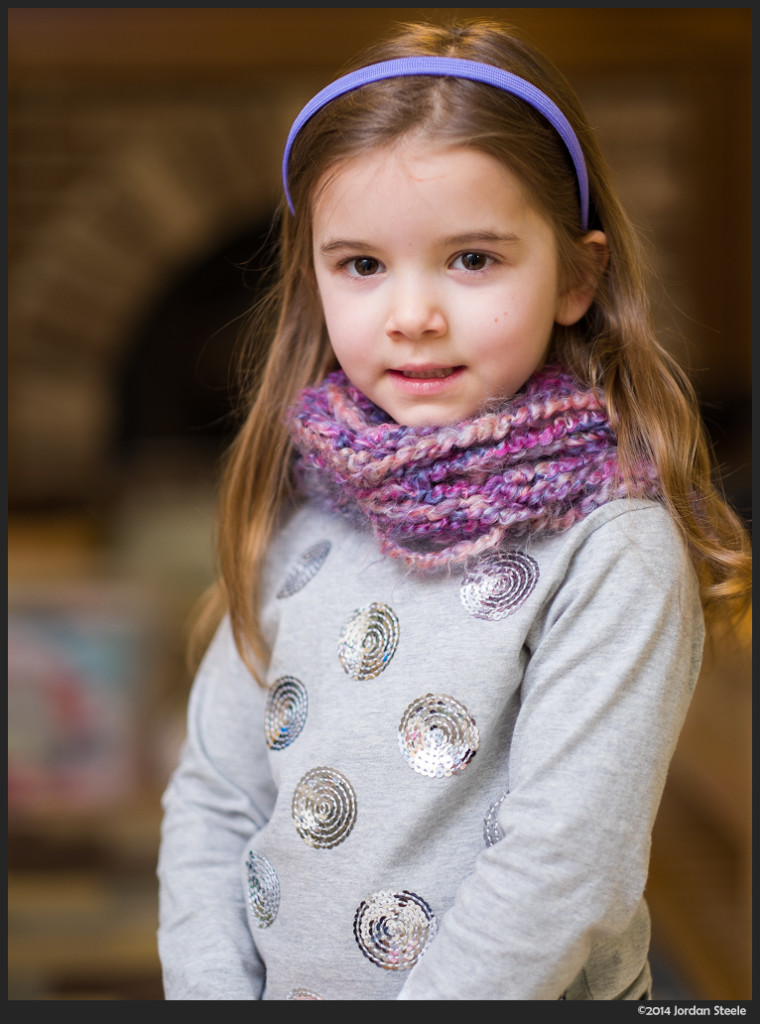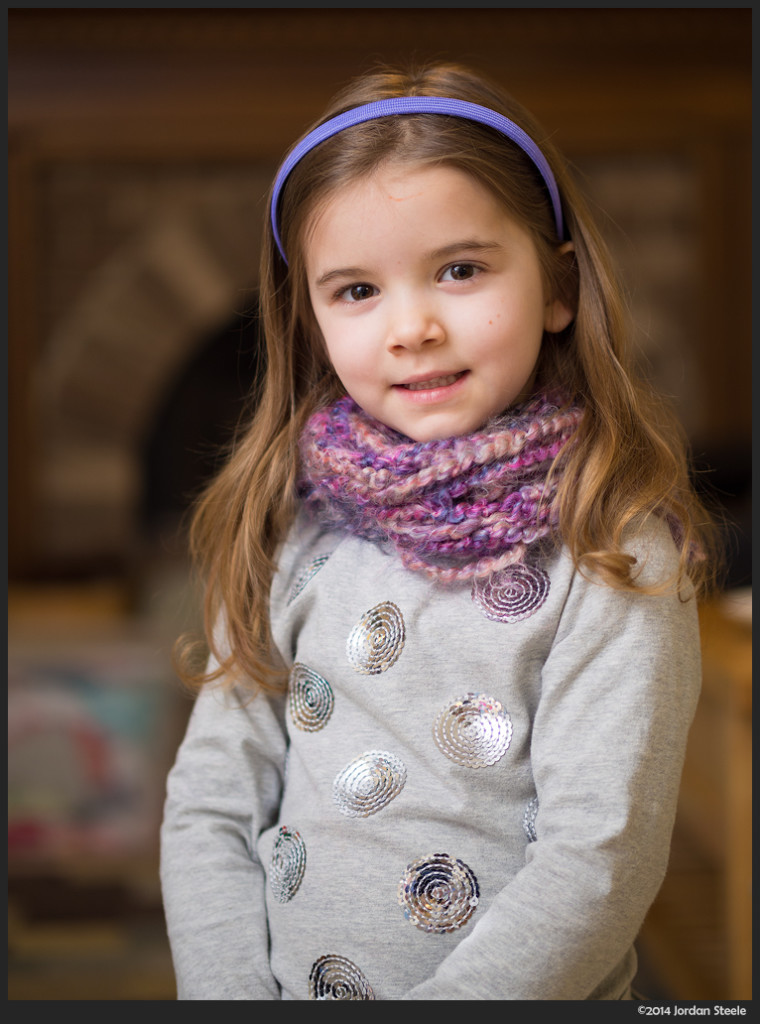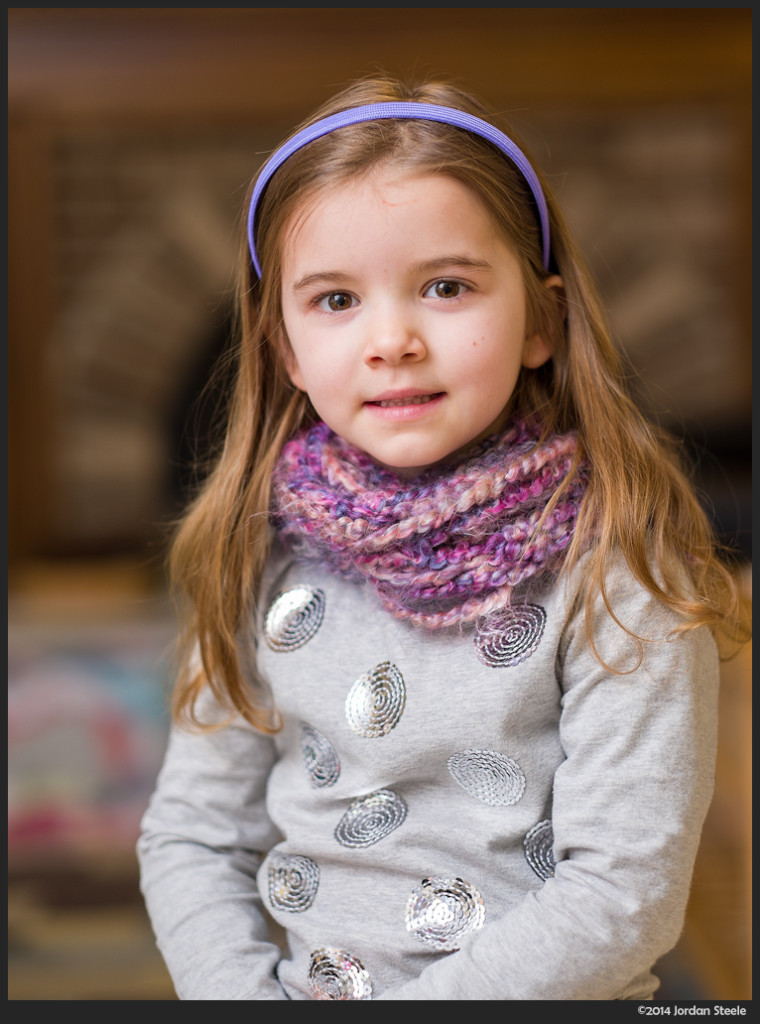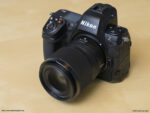Portrait Test
Finally, we’ll take a look at a ‘portrait test.’ My daughter was kind enough to sit patiently while I took photos of her with the two lenses. These are handheld with flash, taken from the same position. Unfortunately, sometimes my daughter would like to rock slightly, which is apparent in the 56mm f/1.2 crop, where she moved very slightly out of the plane of perfect focus.
This test has not yet been repeated with my second copy of the Fuji 56mm. I will attempt to recreate the shot below with my replacement 56mm, and will update the article at that time. For now, this test shows the results of that first lens. Given the improvement seen in this focus zone with the properly aligned Fuji 56mm, I’d imagine there would be some change in the resolution at the focus point for the Fuji lens.
Full images are below:



The overall rendering is very nice between both lenses. WIth the 56mm at f/1.2, there’s just that little bit softer look from the shallower depth of field. The Leica performs beautifully, with great subject separation and a really nice look. The PL’s higher native vignetting at f/1.2 is actually rather desirable and beautiful here (though this can be added in post for the Fuji if desired). In both Fuji shots, I think the colored bin to the left of the arm (which is actually folded laundry) is rendered smoother in the background than the Leica.
Below are 100% crops:

In this case, the Leica shows a bit more resolution than the Fuji at f/1.2, though how much is due to depth of field is hard to tell. When the Fuji is set to f/1.6 to equalize depth of field, it is then a bit sharper than the Leica. In any case, there’s plenty of resolution here. Either lens will do a great job for portraiture.
Additional Notes
While not directly tested here, I’ve not shot enough with both these lenses to add a few more observations between these two lenses.
- Wide open, the Panasonic Leica has a little higher contrast straight out of camera. It really has remarkable contrast for an f/1.2 lens. You can process the Fuji images with a simple contrast adjustment in post to match this, but it doesn’t get that high contrast pop until about f/2.2 straight out of camera.
- The Fuji exhibits some spherical aberration wide open, which may show as a glow with high contrast subjects such as white text on a black background. The Panasonic Leica exhibits extremely minimal spherical aberration.
- While both lenses can show some Longitudinal CA at wide apertures, the Nocticron displays it much more readily. High contrast areas immediately in front and behind the focus point display as a magenta or green fringe. Still, both lenses do a decent job in this department considering the speed.
- Price. Here’s it’a s huge win for the Fuji, coming in at $999 vs. the $1599 of the Nocticron. You do get optical image stabilization with the Leica, but I’m not sure that makes up the full $600 difference between the two lenses.
- While not shown here, I have taken similar (though not identical, and thus why they are not presented) shots at a distance. Both lenses do quite well here, though the Panasonic Leica has the across-frame sharpness lead for more distant subjects at wide apertures. The Fuji 56mm is still quite good across the frame at f/1.2 and f/1.8, but has some light corner softening, but the Leica is very sharp across the whole frame at these distances. Stopped down, both are exceptional.
Conclusion
So who wins? We do! If you shoot Fuji, you’ve got an awesome fast telephoto in the 56mm f/1.2, and if you shoot Micro 4/3, the Panasonic Leica is phenomenal. When I first conducted this test with my slightly faulty Fuji 56mm, I ruled that the Panasonic was the slightly more corrected lens. Now with a properly functioning Fuji 56mm, it’s far less clear cut. Close up, where these lenses would be used for portraiture and the like, the Fuji has a slight edge. At a distance, the Panasonic does slightly better.
The Leica 42.5mm does have a little smoother bokeh and definitley has higher contrast at wide apertures. It is very apparent that these two lenses are both exceptional. For more detailed information on each lens, take a look at my full reviews of the Fuji 56mm f/1.2 and the Panasonic Leica 42.5mm f/1.2 Nocticron.






Leave a Reply